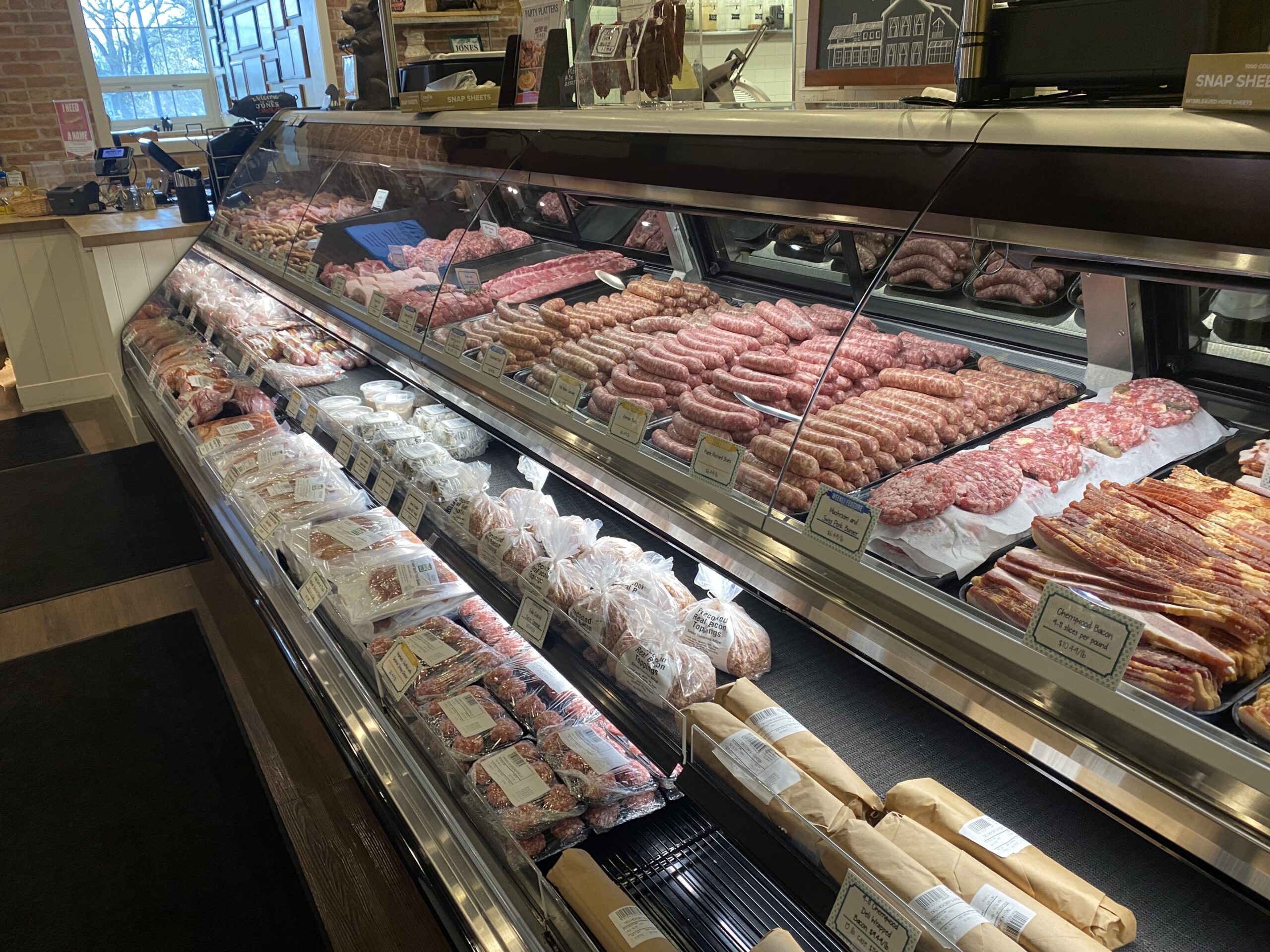Bagley Farms Meat Market Edwardsville IL: Your Best Location for Neighborhood Meat Option
Bagley Farms Meat Market Edwardsville IL: Your Best Location for Neighborhood Meat Option
Blog Article
Uncover the Art of the Butcher's Cut in a Modern Meat Market
In the ever-evolving landscape of contemporary meat markets, the butcher's cut has actually transcended its standard roots, merging olden craftsmanship with modern methods. bagley farms meat market edwardsville il. Today's butchers are not simply processors of meat; they are well-informed artisans who stress sustainability and moral sourcing. Their expertise in selecting and preparing cuts customized to certain cooking needs offers an exceptional dining experience. Yet, what genuinely sets the modern butcher apart is their capacity to create a deeper connection in between consumers and the beginnings of their meat. How do these masters equilibrium custom with development, and what implications does this have for the future of meat intake?
Advancement of Butchery Techniques

The mid-20th century saw butchery techniques better improved by clinical understandings into muscle biology and meat aging, enhancing both inflammation and preference. Advancements like vacuum packaging and refrigeration extended item shelf-life, permitting butchers to branch out offerings and improve quality control. This duration additionally marked the rise of specialized devices, such as band saws and meat slicers, which raised precision and effectiveness in meat processing.
Computerized systems currently aid in monitoring pet provenance and enhancing cuts to fulfill particular consumer preferences. In addition, a revival in artisanal butchery has actually emerged, mixing traditional abilities with modern understanding to provide to consumers looking for moral and sustainable meat alternatives.

Understanding Meat Cuts

Recognizing the ins and outs of meat cuts is crucial for both butchers and customers looking for high quality and value. Each cut comes from a various component of the animal, giving unique tastes, appearances, and food preparation techniques. Mastery of these distinctions not just improves culinary experiences yet additionally maximizes the energy of each carcass. For butchers, exact cuts show skill and regard for the craft, making sure marginal waste and optimal yield.
The primary groups of meat cuts include primitive, sub-primal, and retail cuts. Primitive cuts, such as the loin, rib, and chuck, are the large areas initially divided from the carcass. Butchers then damage these down even more right into sub-primal cuts, before ultimately creating retail cuts available to customers, like ribeye or tenderloin. Each stage needs careful interest to anatomical structure and muscular tissue composition.
Recognizing muscle composition is critical; muscular tissues utilized much more often by the animal have a tendency to be tougher and are best matched for slow cooking techniques, while less-used muscle mass, like those located in the loin, are much more tender and suitable for barbecuing or roasting. Experience with these differences empowers consumers to make educated selections, enhancing their culinary undertakings.
Selecting Quality Meat
Picking the right meat entails more than just selecting an aesthetically attractive item from the screen. The art of picking high quality meat needs a critical eye and understanding of specific attributes that indicate freshness and quality. First of view all, take note click for more of the shade; beef ought to have an intense, cherry-red shade, while lamb must exhibit a soft pink tone, and pork a light pink. This shows the meat is fresh and hasn't been subjected to oxygen for also lengthy.
Secondly, think about the marbling, which describes the white streaks of fat within the muscle. Appropriate marbling is a crucial sign of tenderness and taste, as it thaws throughout food preparation, enhancing the meat's juiciness. Remember, greater marbling typically correlates with superior top quality cuts, such as USDA Prime.
Structure is an additional critical aspect; meat needs to really feel strong to the touch, not slimed or extremely soft. Additionally, bear in mind the fragrance. Fresh meat needs to have a clean, neutral smell, cost-free from any kind of sour or repulsive odors.
Combining Cuts With Food Preparation Approaches
Efficiently coupling cuts of meat with the suitable food preparation techniques is vital for accomplishing ideal flavor and appearance. Different cuts differ in inflammation, marbling, and connective cells material, each calling for certain techniques to unlock their potential. For example, tender cuts like filet mignon and ribeye, with their inherent marbling, take advantage of high-heat, quick-cooking approaches such as barbecuing or pan-searing. These techniques boost the meat's natural flavors and guarantee a juicy finish.
Conversely, tougher cuts like brisket and chuck roast are rich in collagen, which damages down right into jelly when prepared gradually. These cuts are excellent for braising or slow-moving roasting, allowing the meat to tenderize with time and establish deep, complicated flavors. Similarly, cuts such as brief ribs and pork shoulder fare well with slow-cooking methods, where extended cooking times transform their durable appearances into succulent dishes.
Lamb shanks and oxtail, which require extended food preparation to tenderize, are best prospects for cooking or slow-moving simmering. These techniques coax out abundant, hearty visit this web-site tastes while keeping dampness. By understanding the distinct attributes of each cut, chefs and home chefs alike can raise their cooking productions, guaranteeing each dish is both pleasing and memorable.
The Butcher's Duty Today
Browsing the progressing landscape of the modern meat market, the butcher's duty today expands past plain preparation of cuts. Contemporary butchers are cooking artisans, educators, and supporters for sustainable practices. They connect the space between the farm and the fork by making certain ethical sourcing, recognizing pet husbandry, and focusing on openness in the supply chain. This shift reflects the growing customer demand for quality over quantity, where provenance and pet well-being are critical.
In addition to crafting specific cuts, butchers currently involve straight with customers, using cooking guidance and customizing selections to fit individual demands and preferences. Their experience in meat aging, marbling, and taste accounts equips consumers to make informed decisions, enhancing their culinary experiences. This customized solution exhibits the butcher's evolving role as a trusted expert in the cooking area.
Moreover, butchers are pivotal in lessening waste, utilizing whole animals to produce diverse products such as sausages and stocks - bagley farms meat market edwardsville il. This comprehensive method not just appreciates the pet however likewise aligns with contemporary sustainability objectives. By doing this, the contemporary butcher embodies both custom and technology, adjusting to an ever-changing market while preserving the creativity and integrity of their craft

Conclusion
The modern butcher's craft intricately weaves standard techniques with contemporary innovations, highlighting lasting practices and honest sourcing. Proficiency in understanding diverse meat cuts and top quality indicators equips butchers to supply educated suggestions, straightening details cuts with optimum food preparation methods. This experience not just boosts cooking experiences but also enhances the connection between consumers and the origins of their food. By honoring historical methods while embracing modern needs, the butcher's function remains vital in today's sophisticated meat market.
Report this page